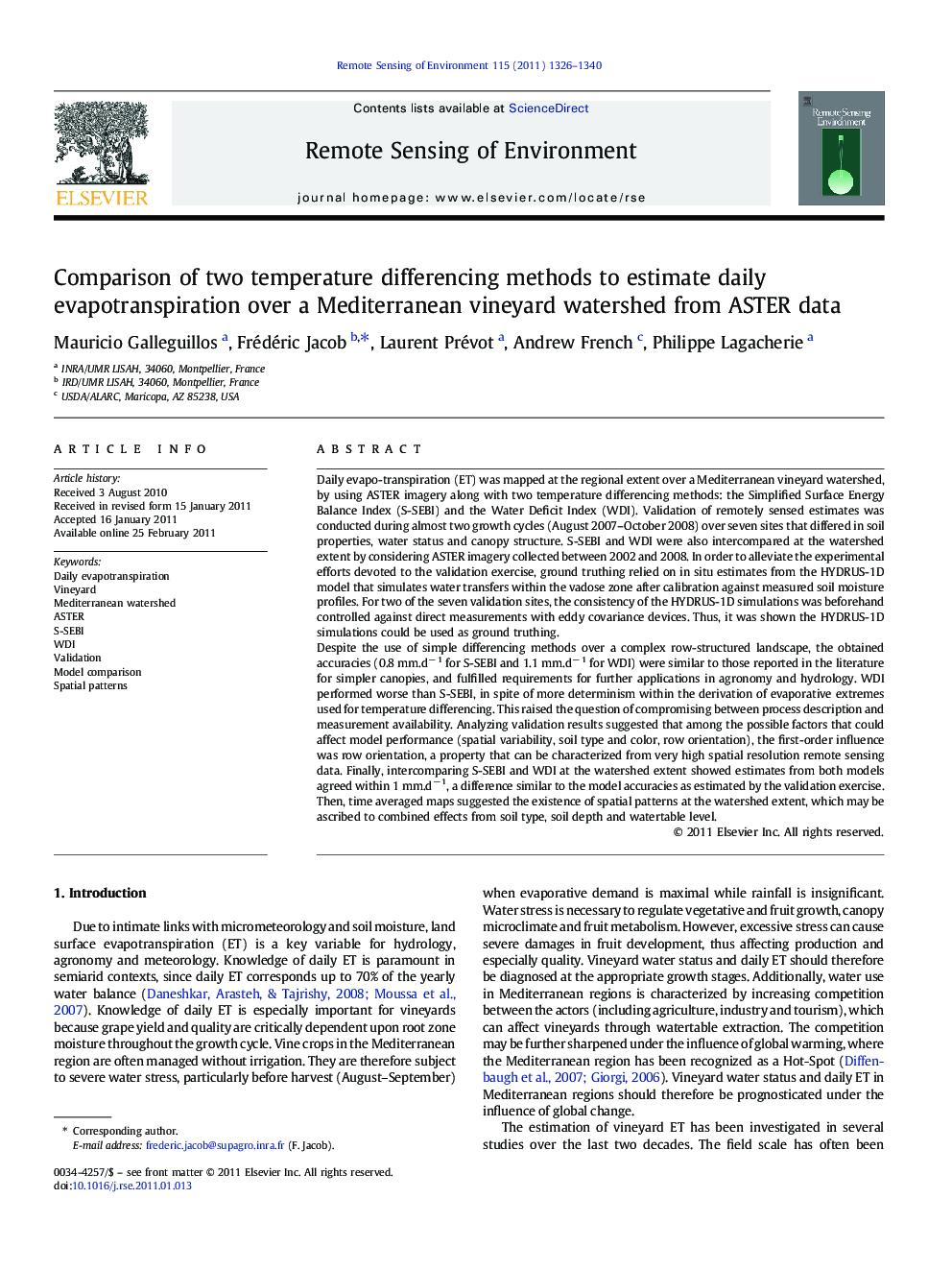| کد مقاله | کد نشریه | سال انتشار | مقاله انگلیسی | نسخه تمام متن |
|---|---|---|---|---|
| 4459372 | 1621291 | 2011 | 15 صفحه PDF | دانلود رایگان |

Daily evapo-transpiration (ET) was mapped at the regional extent over a Mediterranean vineyard watershed, by using ASTER imagery along with two temperature differencing methods: the Simplified Surface Energy Balance Index (S-SEBI) and the Water Deficit Index (WDI). Validation of remotely sensed estimates was conducted during almost two growth cycles (August 2007–October 2008) over seven sites that differed in soil properties, water status and canopy structure. S-SEBI and WDI were also intercompared at the watershed extent by considering ASTER imagery collected between 2002 and 2008. In order to alleviate the experimental efforts devoted to the validation exercise, ground truthing relied on in situ estimates from the HYDRUS-1D model that simulates water transfers within the vadose zone after calibration against measured soil moisture profiles. For two of the seven validation sites, the consistency of the HYDRUS-1D simulations was beforehand controlled against direct measurements with eddy covariance devices. Thus, it was shown the HYDRUS-1D simulations could be used as ground truthing.Despite the use of simple differencing methods over a complex row-structured landscape, the obtained accuracies (0.8 mm.d− 1 for S-SEBI and 1.1 mm.d− 1 for WDI) were similar to those reported in the literature for simpler canopies, and fulfilled requirements for further applications in agronomy and hydrology. WDI performed worse than S-SEBI, in spite of more determinism within the derivation of evaporative extremes used for temperature differencing. This raised the question of compromising between process description and measurement availability. Analyzing validation results suggested that among the possible factors that could affect model performance (spatial variability, soil type and color, row orientation), the first-order influence was row orientation, a property that can be characterized from very high spatial resolution remote sensing data. Finally, intercomparing S-SEBI and WDI at the watershed extent showed estimates from both models agreed within 1 mm.d− 1, a difference similar to the model accuracies as estimated by the validation exercise. Then, time averaged maps suggested the existence of spatial patterns at the watershed extent, which may be ascribed to combined effects from soil type, soil depth and watertable level.
Research highlights
► Simulations of HYDRUS-1D model can be used to validate remotely sensed daily ET.
► Temperature differencing models allow accurate mapping of daily ET over vineyards.
► The contextual S-SEBI model performs better than the more physical WDI model.
► Vineyard row orientation influence the accuracy on remotely sensed daily ET.
► Maps of daily ET over vineyards may depict spatial structures.
Journal: Remote Sensing of Environment - Volume 115, Issue 6, 15 June 2011, Pages 1326–1340